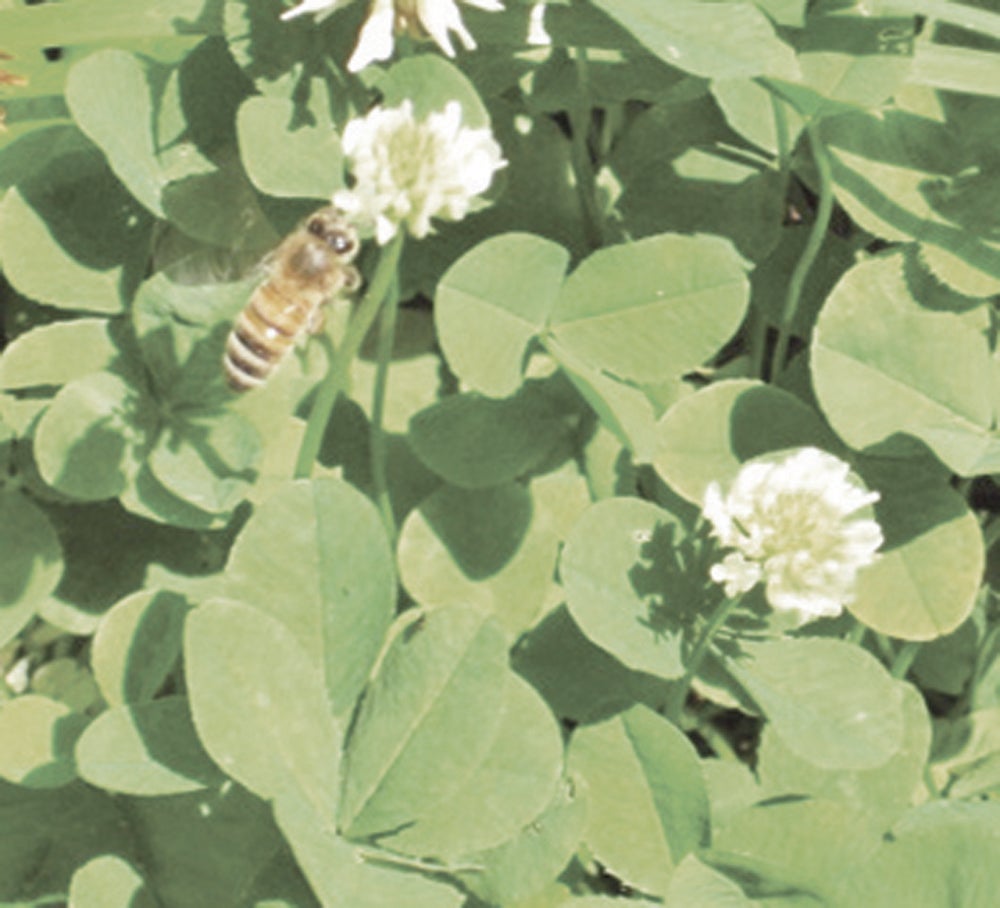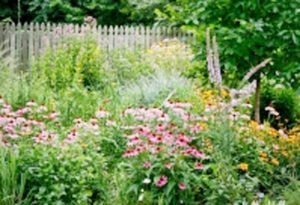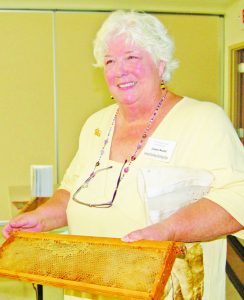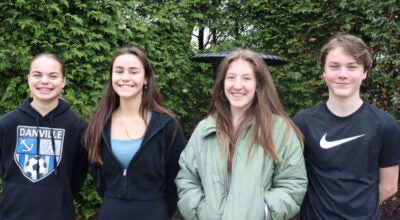The Scoop- The honeybee forage garden
Published 6:02 am Friday, April 6, 2018

- Photo by Susan Jonas.
Some gardeners consider clover a weed, but the flowers are an important food source for honeybees, especially in areas with large lawns and few flowering plants.
By Janis Scott and Susan Jonas
Garden Club of Danville
Can it be that spring has finally sprung? The signs have been popping up everywhere, from the courting songs of birds to clumps of daffodils. On warm days you may have noticed the busy foraging of bees. Keep bees on the brain while you’re deciding what to plant this year.
Janis Scott, a member of the Garden Club of Danville, became a beekeeper 10 years ago, before bees grabbed the attention of most gardeners. These days environmentally conscientious gardeners like Janis are paying attention to the importance of bees. Due to land development and extensive use of pesticides, their numbers are declining worldwide. Approximately 80 percent of flowering plants on earth require the help of pollinators, including bees, for survival. That includes the plants we eat. Besides, just imagine a world without honey!
You don’t have to be a beekeeper to support honeybees and other pollinators. Even if you have no interest in keeping honeybees, you can still help them by the plants you use in your own landscape and by your gardening practices.
A well-planned honeybee forage garden provides food and shelter for bees and other pollinators. In return, the bees will increase the health and productivity of your garden. Janis offers suggestions for your bee friendly garden this year.

Photo by Betty Hall Photography
Variety is the spice of life for honeybees. Gardens that use 10 or more species of bee-preferred plants, particularly natives, tend to be the most successful, and beautiful, too. The Garden Club of Danville encourages all homeowners to plant flowers, shrubs, and trees that attract pollinators, and to avoid the use of pesticides, which can kill bees and other beneficial insects.
Choose plants that attract bees. Bees love native wildflowers, flowering herbs, and many flowering fruits and vegetables. Select single flower types for your bee garden, such as daisies and marigolds, rather than heavily ruffled double flowers. Double headed flowers look showy but produce much less nectar and make it more difficult for bees to get to the protein rich pollen. Skip the highly hybridized plants which have been bred not to seed and thus produce very little pollen.
Some herbs improve the immune system of honeybees. The flowers of chamomile, yarrow, Echinacea, the leaves and stems of stinging nettles, peppermint, sage, rue, thyme, lemon balm, and hyssop all keep honeybees healthier. If you have an herb garden, leave at least some of the blooms on the plants and the bees will flock to the flowers.
Group the plants together. Try to plant at least one square yard of the same plant to attract bees. If you are short on space, fill a planter or window box with flowers or herbs. That’s all you need to create an inviting oasis for bees.
Provide a long bloom cycle. Pick plants that keep on blooming so the bees will come back again and again. Choose a variety of plants that will overlap in bloom from early spring until late fall.
Let your plants flower. Leave flowers on your vegetable plants and deadhead all spent flowers to encourage repeat bloom. For example, if you grow broccoli, harvest the edible flowerettes, but leave the stems of the plant so it will flower. When your lettuce bolts, leave the flower stalks. You may be surprised by how many bees and other insects they attract, and the yellow flowers are surprisingly pretty, too.
Provide a fresh water source. Almost any shallow water source will do. A gently sloping birdbath with stones for bees to stand on, a backyard pool, waterfall, or even a dripping hose can provide moisture for bees. A drop of fresh water is all a bee needs. Cabbage and broccoli leaves full of morning dew are a great source of water, as is the damp soil in newly watered potted plants.
Do not use pesticides, herbicides, or any other chemicals anywhere on your property. That includes your lawn, shrubs, or trees. After all, you are trying to attract bees and, lured by your forage garden, they will wander throughout your yard. Most garden chemicals are toxic to bees and have widespread effects which are detrimental to plants, beneficial insects, and other native pollinators.
Appreciate the beauty of weeds. Bees thrive in gardens that are not extremely manicured.

Photo by Andrea Perkins
Local beekeeper and Garden Club member Janis Scott says she has an “obsession” with beekeeping and the importance of bees to agriculture and gardens. Scott has four hives on her farm and offers suggestions for making a bee friendly garden.
Dandelion, clovers, milkweed, goldenrod, and other flowers often considered weeds are very important food sources for bees. In areas filled with nothing but sprawling lawns, dandelions and clovers are vital plants for a bee’s survival. Let the weeds grow and flower in your yard and you will soon have your own personal honeybee sanctuary. The next time you see a dandelion going to seed, says Janis, grab it, blow those seeds around, and feel good that you are doing your part to help save the bees. It’s as simple as that.
Janis Scott’s honeybee favorites:
Spring: crocus, snowdrops, jonquils, tulips, hyacinth, dandelions.
Summer: Black-eyed Susans, gaillardia, bachelor buttons, bee balm, sedum, peony, native honeysuckle, coneflowers.
Fall: Zinnias, sedum, asters, goldenrod.
Vegetables and fruits: All berries, fruit trees, cucumbers, tomatoes, squash, pumpkins, and melons, almost any herb.
Trees: Maple, willow, black locust, sumac.








